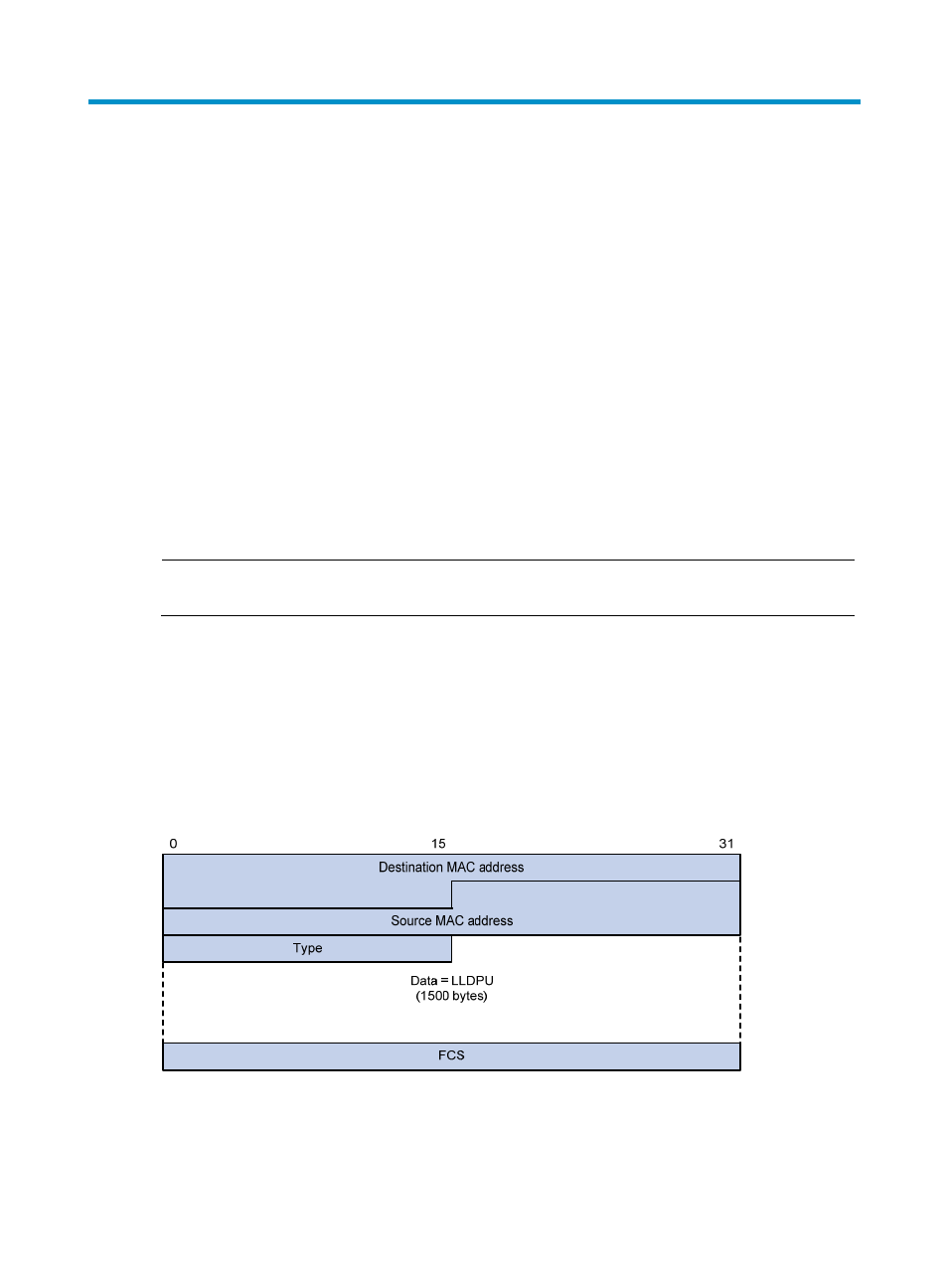Lldp configuration, Overview, Background – H3C Technologies H3C S10500 Series Switches User Manual
Page 229: Basic concepts, Lldpdu formats

218
LLDP configuration
Overview
Background
In a heterogeneous network, a standard configuration exchange platform ensures that different types of
network devices from different vendors can discover one another and exchange configuration for the
sake of interoperability and management.
The IETF drafted the Link Layer Discovery Protocol (LLDP) in IEEE 802.1AB. The protocol operates on the
data link layer to exchange device information between directly connected devices. With LLDP, a device
sends local device information (including its major functions, management IP address, device ID, and
port ID) as TLV (type, length, and value) triplets in LLDP Data Units (LLDPDUs) to the directly connected
devices. At the same time, the device stores the device information received in LLDPDUs sent from the LLDP
neighbors in a standard management information base (MIB). LLDP enables a network management
system to quickly detect and identify Layer 2 network topology changes.
NOTE:
For more information about MIBs, see
Network Management and Monitoring Configuration Guide.
Basic concepts
LLDPDU formats
LLDP sends device information in LLDPDUs. LLDPDUs are encapsulated in Ethernet II or Subnetwork
Access Protocol (SNAP) frames.
1.
Ethernet II-encapsulated LLDPDU format
Figure 72 Ethernet II-encapsulated LLDPDU format